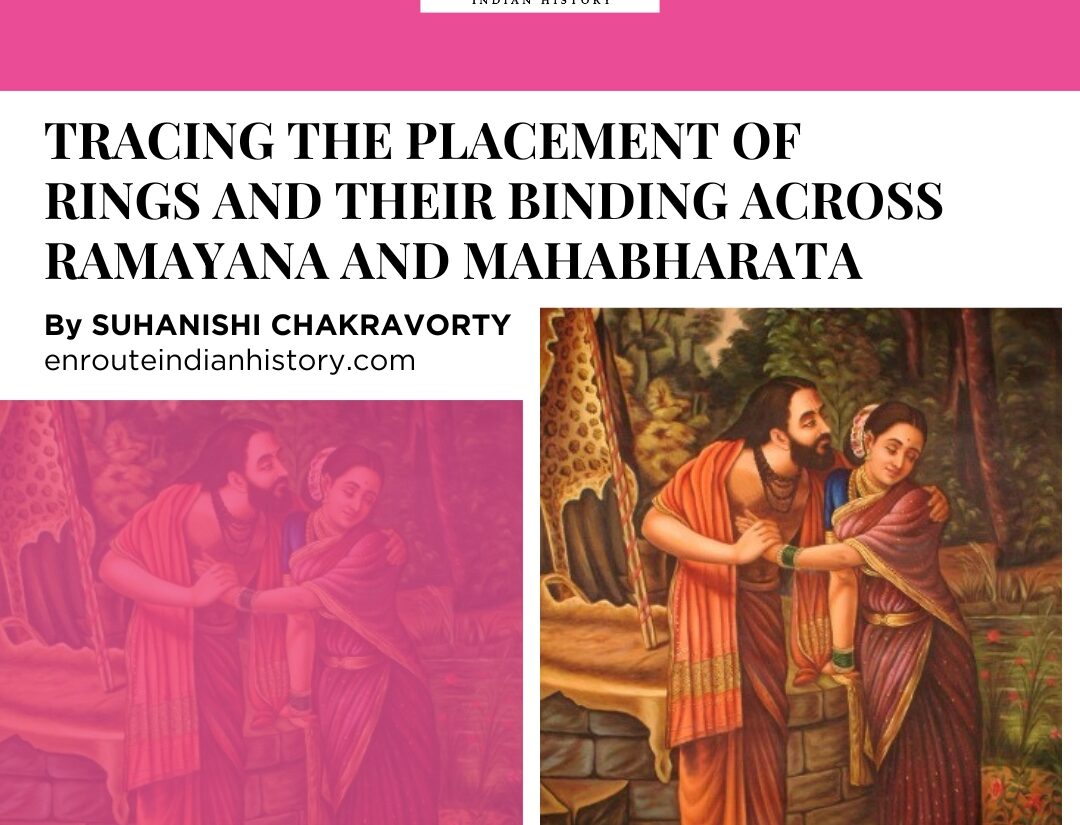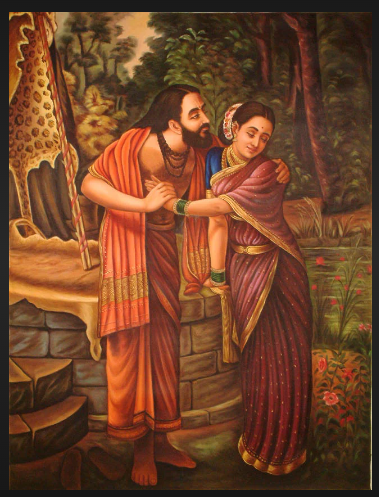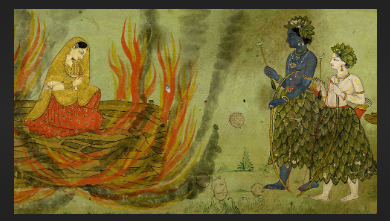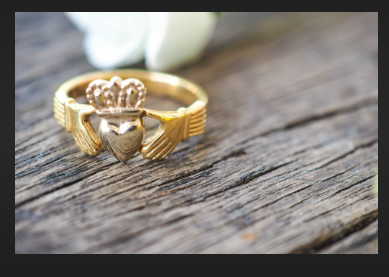Tracing the placement of rings and their binding across Ramayana and Mahabharata
- EIH User
- August 1, 2024

By looking at people’s history one could easily find out the importance of rings in Indian households. Today, no marriage in any community takes place without this ornament (Thapar, 1987). Given the multiplicity and diversity of Indian culture, this is not an ordinary achievement. The amalgamation of pride, morality, identity, marital status, promise, mischief and hierarchy has beautifully happened on this ornament. From the age of puraranas, Ramayana and Mahabharata the finger rings are messengers from truth., word of mouth and morality. However, we still have people and their histories that tell us that maybe having a token of love could possibly never replace pure trust. A ring could be a messenger, a sign, or a language but not generate trust if it’s not there. Rather, if it indeed is there it can communicate that to others.
Rings are carriers of morales Shakuntala narratives
Yes, but how so? That is probably the very question that these stories keep on asking throughout the story and even after that. Let’s look at the most popular story where is ring is supposed to carry the identity of a woman that involves her inheritance and placement of his son. In Kalidasa’s version of Shakuntala, we find a subplot in the popular story where Dusyanta leaves a ring to Shakuntala to prove herself in case he fails to remember her (Balakrishnan, 1994). However, when the actual situation has arrived the ring eventually fails to fulfil the promise. Dushyanta, being the king and man in power has the atmosphere around him where he can proudly disregard this woman who is his heir’s mother and his one-time lover. When with the aid of a divine voice he finally recognises that this woman even then he describes his actions as if it was necessary to save his own back in court rather than having Shakuntala disrespected like that. What’s more, he further maintains his kingship and position by forgiving her for her harsh words.

Dushyanta and Shakuntala by Raja Ravi Verma, Source: exoticindianart
On another version, the ring given to Shakuntala even has Dushyant’s name carved in it, something that only royal family members will have in their possession. Still, when this pregnant Shakuntala arrived at the court the most affectionate welcome she received was when a certain group of court ministers suggested that His Highness can wait till the child is borne to see if the baby really is sovereign (Pattanaik, 2010). However, the ladies in the court instantly pointed out that a passion like that should not need an object like a ring to place its importance. With time and as the king really needed an heir the son was taken in and Shakuntala was given her due respect. However, we should note the fact that although the ring was there it did not exactly fulfil the promise. People knew what they were doing and did it according to their sense of morality. Nevertheless, the ring does capture the identity and token for being the ‘sign’.
The epics (introducing the ring as a token of recognition)
The token of recognition has been extended to other narratives as well on similar occasions. In the Vedic Ramayana, we find King Rama to be equally bewildered and taken into surprise when Sita visits her along with her two sons (Jones, 2019). Even with the help of the marriage ring the king fails to recognise her. It is mostly the intervention of divine voice and the requirement of the legitimate heir to the throne that makes the son’s acceptance by the King, which is followed by the acceptance of his mother. In Ramayana, Sita had enough of this so she withdrew herself but in most cases, the women accept their position and stay with the king in the court as their queens. As Doniger (1998) rightly puts it, Indian men seek both an erotic encounter (which could be supported by concepts like Gandharva marriage, where mutual attraction is enough to suffice a marriage) and a legitimate heir to their throne. This whole process has to be done without shame being inflicted on them. The position of the ring is interesting here. It is provided as the protector and identity carrier for most cases but the sheer production of it will not necessarily ensure the full commitment. However, the responsibility is shared.

Sita on fire, source: BBC
Non-epic literature that humanise the characters
But some narratives do not always have the ring in this helpless possession. In one of the stories of ‘Kathasaritsagar’ we find an interesting position of the ring that could be regarded as the older version of a marriage ring. Once in Ujjain, there was a very popular trickster called Muladeva who was tricked and defeated by a clever girl. This was a prick on the ego of this man and he decided to marry her and leave her immediately as means of a payback (Hiltebeitel, 2015). The girl accepts the challenge and throws another one at him. Here she claims that she will bore him a son who will bring him back to her. The next morning Muladeva leaves the girl before she wakes up. However, before leaving the bed he puts her ring on her finger. After some time she wakes up and finds that she has been tricked just the way she was told.
Then, she too resilient in her own claims arrives at Ujjain, dresses up as a courtesan and gains popularity. She is eventually established as a very beautiful and attractive courtesan of the city. Muladeva visits her and fails to recognise her. In no time he gets pregnant. Then she comes back to her home and starts to raise the son. After a couple of years, the son is been mocked as a ‘no father’ child and comes to his mother. She encourages her son to bring her father back (Dehejia, 2009). He does so. This time Muladeva is defeated again and the ring helps him identify his defeat. We are not sure why he casually accepted the defeat this time with the possession of the ring but we guess it might be because there is no kingship involved. Whatever, might be the reason the placement of the ring is different and interesting.

Rings in pop culture, source: msn
India still capturing morality and justice in the ring
The age of the kings is gone. There are no kings to be found and it is a democratic country now. However, with these kinds of stories forming the cultural identity of the people, the importance of the ring among all the other jewels is undeniable (Nigam, 1983). Today, a family gift, recognition, a marriage, and astrological protection all are done with the help of a ring. Some jewels and gems are often described to keep a person under the influence of one emotion, generally, this is advised by somebody knowledgeable on the subject. In a marriage, there is an engagement ring, a ring as a token of blessing and good luck (Dwivedi, 2016). The essence of morality and commitment is embroidered along these ring gold rings. Today, even pop culture has adapted the concept of rings as tokens of friendship. From ancient times there are very few ornaments that managed to be kept and retained in this strength.
Bibliography
Thapar, R., 1987. Cultural transaction and early India: tradition and patronage. Social Scientist, pp.3-31.
Doniger, W., 1998. Rings of rejection and recognition in ancient India. Journal of Indian philosophy, 26(5), pp.435-453.
Pattanaik, D., 2010. Jaya: An illustrated retelling of the Mahabharata. Penguin Books India.
Hiltebeitel, A., 2015. Introducing the M ahābhārata. Religious Studies Review, 41(4), pp.153-174.
Nigam, M.L., 1983. EARLY INDIAN JEWELLERY A CRITICAL STUDY·. Скорина и скориниана, 11, p.213.
BALAKRISHNAN, P., 1994. THE CURSE MOTIF IN ABHIJNANASAKUNTALAM: Kalidasa’s Psychological Insight. Indian Literature, 37(2 (160), pp.108-121.
Jones, F.W., 2019. Finger-ring lore: historical, legendary, anecdotal. Good Press.
Dwivedi, J., 2016. Indian tribal ornaments; a hidden treasure. Journal of Environmental Science, Toxicology and Food Technology, 10(3), pp.1-16.
Dehejia, V., 2009. The body adorned: sacred and profane in Indian art. Columbia University Press.

















